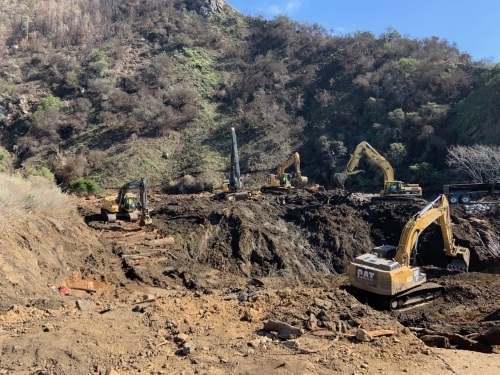FEDERAL ACTION
Transportation Getting $100B from $1.9T COVID Package – AASHTO Journal
USDA Investing $285M in Transportation, Infrastructure – AASHTO Journal
Leveraging Policy, Funding to Improve Infrastructure Resiliency – AASHTO Journal
Sen. Ed Markey Pushes Climate-Focused Transportation Bills – Transportation Topics
New Version of Ports-to-Plains Highway Bill Authored in Congress – KKAM
Biden eyes tougher approach to measuring impact of greenhouse gases – The Hill
COVID-19
How contactless technology is defining the customer experience post-COVID-19 – Future Travel Experience
Aviation industry urges Biden to back COVID-19 health credentials – Reuters
INFRASTRUCTURE RESILIENCE AND SUSTAINABILITY
Texas has lessons for all of us on infrastructure resilience – The Hill
To Fight Flooding, This City Plans to Renovate – and Retreat – Bloomberg Green
Breakingviews – U.S. stimulus is map for infrastructure bonanza – Reuters
Infrastructure’s Time Has Come – Supply Chain Management Review (Opinion)
For Transportation Infrastructure, Look to Cities to Do It Right – Governing (Commentary)
AIR QUALITY
Trump Change to Pollution Rules Survives New Jersey Appeal – Courthouse News Service
New York Pilots Program to Reduce Greenhouse Gas Emissions Through Heat Pump Technology – ACHR News
ENVIRONMENTAL JUSTICE
In call for environmental justice, Biden’s climate agenda reaches into neighborhoods – Pittsburgh Post-Gazette
Albuquerque invests in electric buses, and calls for transit equity – Daily Lobo
NATURAL RESOURCES
Caltrans Specialists Scale Boulders & Cliffsides to Protect Motorist Safety – Using Courage, Know-How & Explosives! – Caltrans (Video)
Trump’s water rule now enforced nationally – National Hog Farmer
Arizona seeks to create surface water protections after Clean Water Act rollback – Arizona PBS
Park closes roads for restoration work, amphibian crossings – Pike County Courier
What Is A Wetland? – WorldAtlas
Environmental nonprofits join forces to hire ‘science geek’ to help fix the region’s water woes – News-Press
Beverly Gard: Wetlands bill needs more study before lawmakers act blindly – Indianapolis Business Journal (Opinion)
HEALTH AND HUMAN ENVIRONMENT/ACTIVE TRANSPORTATION
Caltrans asks for public input on areas to improve bicycling, walking – KNX
Atlanta BeltLine moves toward finding Northwest Trail route through Buckhead; transit route to follow – Reporter Newspapers
More bike lanes are coming to Reston and Herndon this year – Reston Now
TRB RESOURCES/ANNOUNCEMENTS
TRB Webinar: Real-Time Response – A Pandemic Playbook for Public Transportation Agencies – TRB
TRB Webinar: The New Virtual Reality for Public Meetings and Social Distancing – TRB
TRB Webinar: Emerging Challenges for Congestion Pricing on Managed Lanes – TRB
TRB’s Transportation Explorers Podcast: Communicating and Using Transit to Get People to Vaccines – TRB
Airport Authority Launches Interactive Map – Charlotte County Airport Authority (Press Release)
FEDERAL REGISTER NOTICES
Information Collection; National Woodland Owner Survey – Forest Service (Notice; request for comment)
Agency Information Collection Activities; Submission to the Office of Management and Budget for Review and Approval; Oil Shale Management – Bureau of Land Management (Notice of information collection; request for comment)
Proposed Revisions to the National Handbook of Conservation Practices for the Natural Resources Conservation Service – Natural Resources Conservation Service (Notice of availability; request for comment)
Air Plan Approval; Ohio; Infrastructure SIP Requirements for the 2015 Ozone NAAQS – EPA (Proposed rule)
Draft Environmental Impact Statement for the Proposed Southern Bighorn Solar Projects, Clark County, Nevada – Bureau of Indian Affairs (Notice of availability)
Notice of Availability of a Final Environmental Impact Statement for Vineyard Wind LLC’s Proposed Wind Energy Facility Offshore Massachusetts – Bureau of Ocean Energy Management (Notice of availability; final environmental impact statement)
Recertification of Prince William Sound Regional Citizens’ Advisory Council – Coast Guard (Notice of recertification)
Review of Nomination for Lake Erie Quadrangle National Marine Sanctuary – National Oceanic and Atmospheric Administration (Notice)




